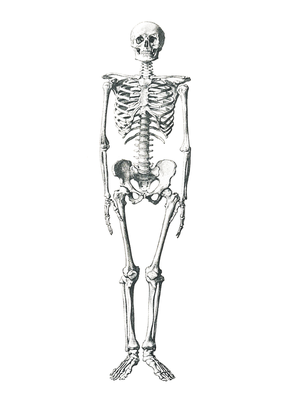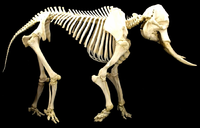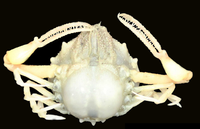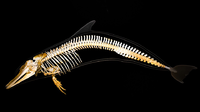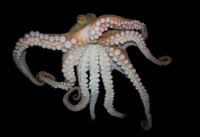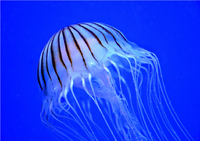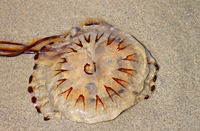Difference between revisions of "Skeletal System"
| Line 11: | Line 11: | ||
===About Skeletons=== | ===About Skeletons=== | ||
: The skeleton is made up of all the bones in an animal. | : The skeleton is made up of all the bones in an animal. | ||
| − | : Muscles are attached to the bones in the skeleton that allows us to move. | + | : [[Muscle|Muscles]] are attached to the bones in the skeleton that allows us to move. |
: The rib cage is part of the skeleton and this protects the heart and lungs. | : The rib cage is part of the skeleton and this protects the heart and lungs. | ||
: The skull is part of the skeleton and this protects our brain. | : The skull is part of the skeleton and this protects our brain. | ||
| Line 38: | Line 38: | ||
|[[File:OctopusLand.png|center|200px]] | |[[File:OctopusLand.png|center|200px]] | ||
|- | |- | ||
| − | | style="height:20px; width:200px; text-align:center;" |An octopus does not have a '''skeleton''' and just uses [[muscles]] to move underwater. | + | | style="height:20px; width:200px; text-align:center;" |An octopus does not have a '''skeleton''' and just uses [[Muscle|muscles]] to move underwater. |
| style="height:20px; width:200px; text-align:center;" |An octopus cannot move easily on land because it has no '''skeleton''' to support it. | | style="height:20px; width:200px; text-align:center;" |An octopus cannot move easily on land because it has no '''skeleton''' to support it. | ||
|- | |- | ||
| Line 44: | Line 44: | ||
|[[File:JellyfishLand.png|center|200px]] | |[[File:JellyfishLand.png|center|200px]] | ||
|- | |- | ||
| − | | style="height:20px; width:200px; text-align:center;" |A jellyfish is an [[animal]] that has no [[Bone|bones]]. It moves in water with its [[muscles]]. | + | | style="height:20px; width:200px; text-align:center;" |A jellyfish is an [[animal]] that has no [[Bone|bones]]. It moves in water with its [[Muscle|muscles]]. |
| style="height:20px; width:200px; text-align:center;" |When a jellyfish gets washed up on the beach it cannot move because it has no '''skeleton''' to support it. | | style="height:20px; width:200px; text-align:center;" |When a jellyfish gets washed up on the beach it cannot move because it has no '''skeleton''' to support it. | ||
|} | |} | ||
==Key Stage 3== | ==Key Stage 3== | ||
The '''skeletal system''' is an [[Organ System|organ system]] in [[Animal|animals]] made of [[Bone|bones]] that work together to help the [[animal]] move and protect the vital [[Organ|organs]]. | The '''skeletal system''' is an [[Organ System|organ system]] in [[Animal|animals]] made of [[Bone|bones]] that work together to help the [[animal]] move and protect the vital [[Organ|organs]]. | ||
Revision as of 14:39, 12 August 2018
Contents
Key Stage 1
Meaning
A skeleton is all the bones inside an animal.
Key Stage 2
Meaning
The skeleton is a group of bones that support an animal and help it move.
About Skeletons
- The skeleton is made up of all the bones in an animal.
- Muscles are attached to the bones in the skeleton that allows us to move.
- The rib cage is part of the skeleton and this protects the heart and lungs.
- The skull is part of the skeleton and this protects our brain.
- Without a skeleton our bodies would be like jelly and we wouldn't be able to stand up or move about easily.
Animal Skeletons
| An elephant's skeleton showing the bones and tusks. Notice the trunk has no bones inside it. | A fish has a Backbone as part of its skeleton. |
| A crab has an exo-skeleton which means its skeleton is on the outside, not the inside of its body. | A dolphin's skeleton. |
Animals Without Skeletons
| An octopus does not have a skeleton and just uses muscles to move underwater. | An octopus cannot move easily on land because it has no skeleton to support it. |
| A jellyfish is an animal that has no bones. It moves in water with its muscles. | When a jellyfish gets washed up on the beach it cannot move because it has no skeleton to support it. |
Key Stage 3
The skeletal system is an organ system in animals made of bones that work together to help the animal move and protect the vital organs.
